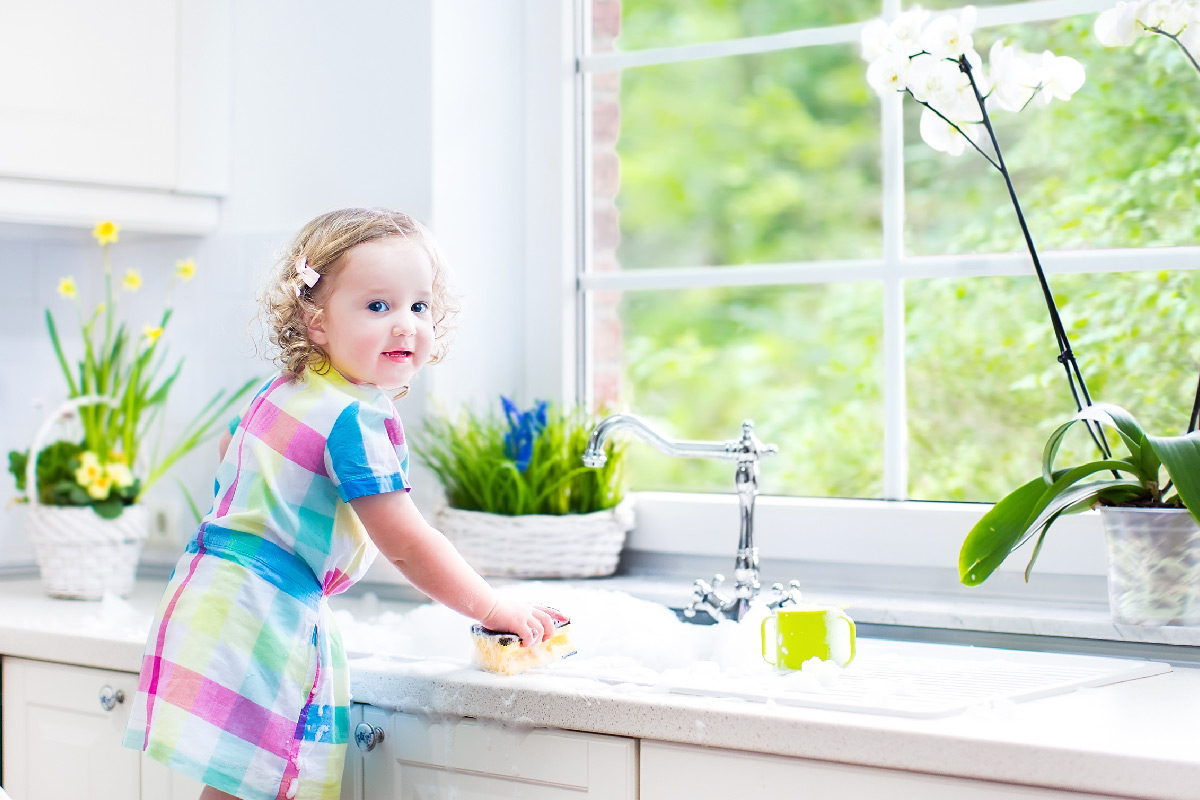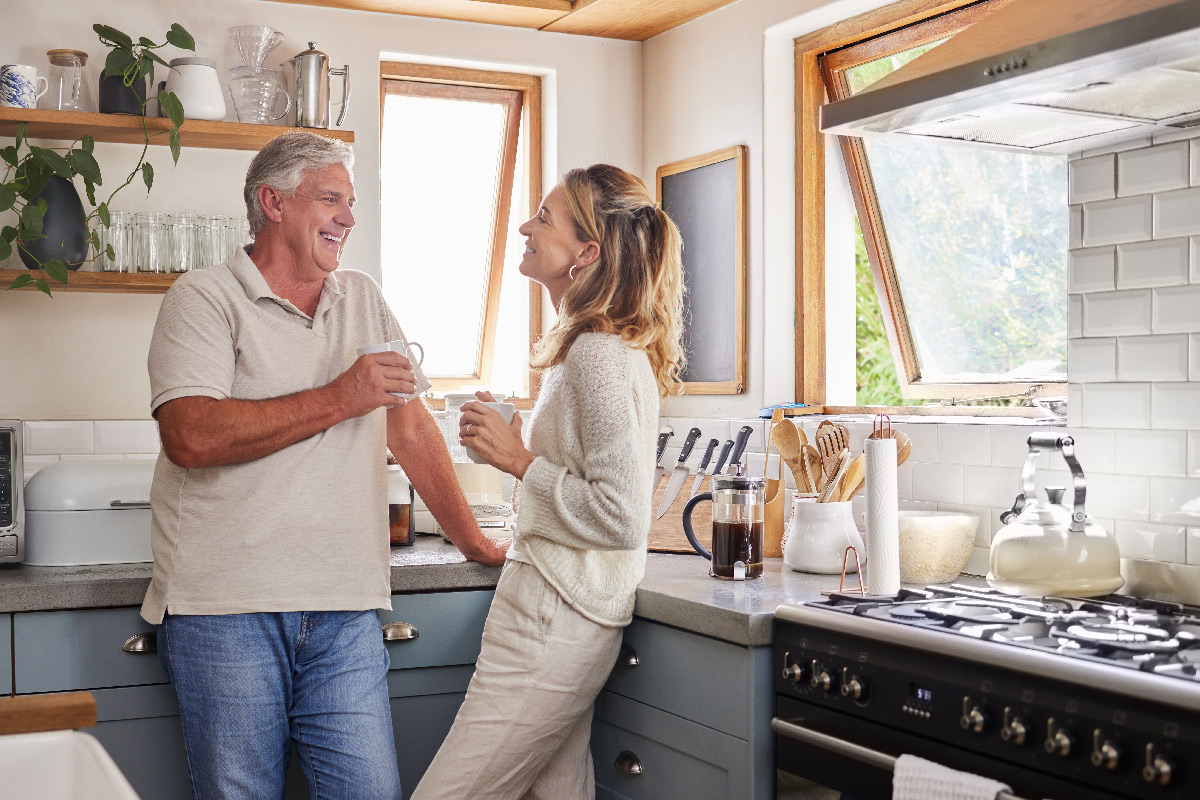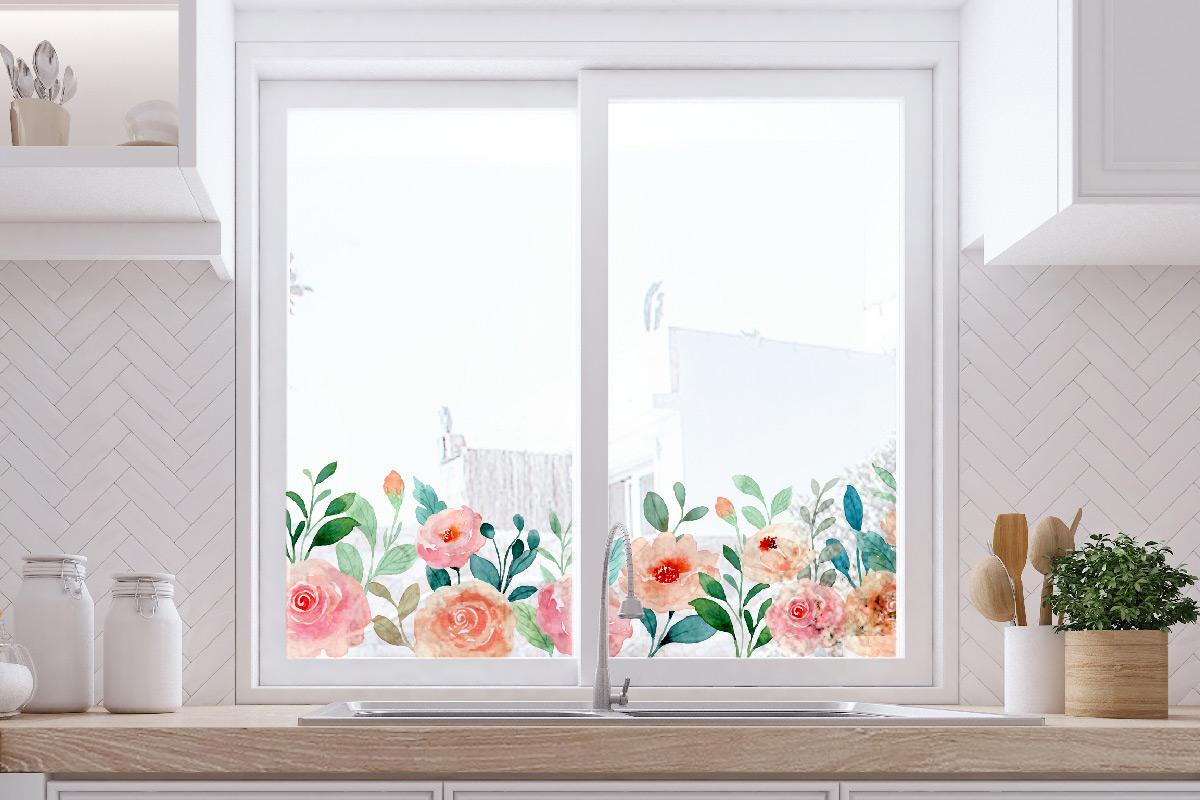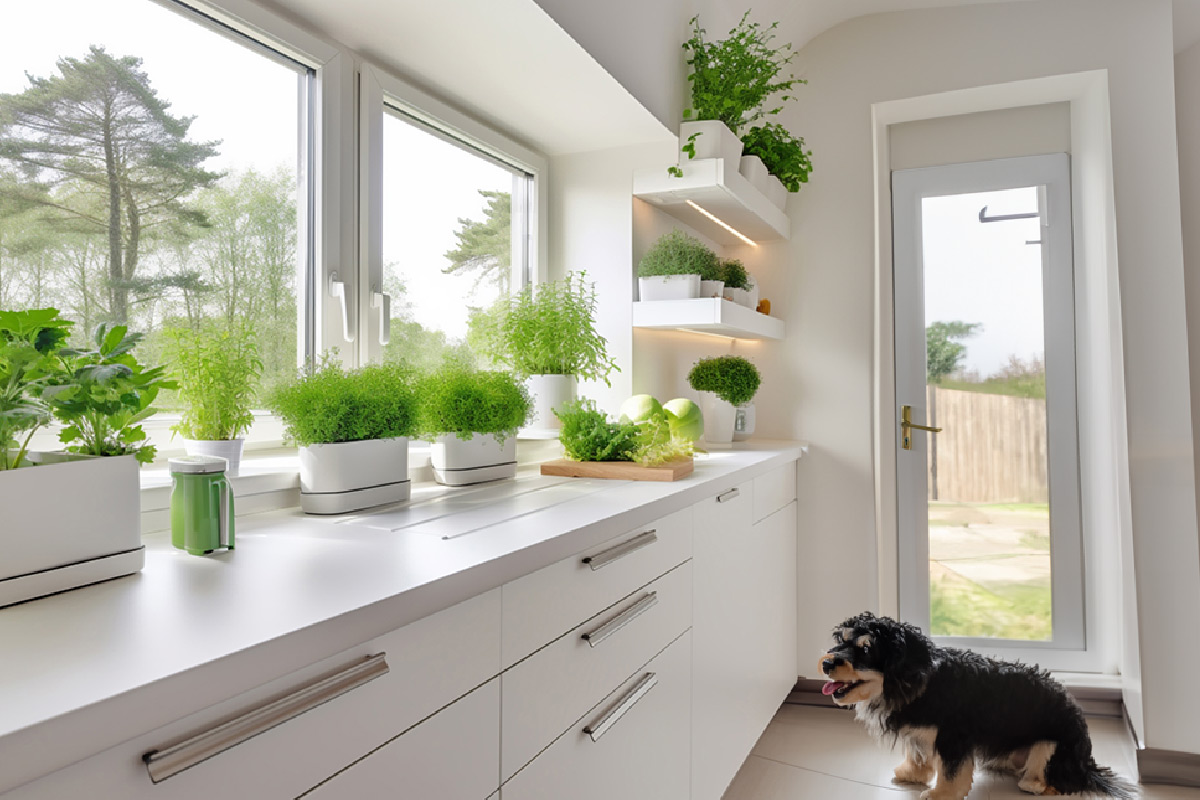12 September, 2023
windows

Kitchen windows are a seemingly simple subject, but when we delve into it, we quickly find that we face a whole host of dilemmas and challenges. A headache? Luckily not, because choosing windows for the kitchen and the subsequent kitchen window arrangement turns into an exciting adventure. The moment after first being confronted with the enormity of the possibilities, we realise that choosing windows for the kitchen appears difficult only because delightful solutions abound, and unfortunately, we can't have it all.
The purpose of every window in our home is to let in natural light and, at least sometimes, to improve ventilation. Today, practically every kitchen is a kitchen with a window. In the past, this was not so obvious, but now, it can be considered a common standard.
As an introduction to our considerations, recalling the windows in the kitchens of family and friends, we conclude that a kitchen window offers the same basic options as other windows in the home.
The modern kitchen window is potentially:

Just like in other parts of the house, windows in the kitchen can be windows:
As with other windows, in the kitchen, we have various finishing options, e.g.:
and many more. Which ones of these are realistic choices for a kitchen?
Our ideas for a kitchen window should always focus first and foremost on the ergonomics of the space. To put it simply, we need to feel comfortable in the kitchen, and a large amount of light is a prerequisite for this.
Plenty of light means, in practice, a large kitchen window. The already classic kitchen window arrangement, with a window above the sink, encourages us to glaze the wall over the kitchen worktops, where we prepare meals and wash dishes. For modern spacious kitchens, this is the most fashionable solution. We have to remember that where there is a window, there will be no kitchen cabinets above the countertop. In slightly smaller kitchens, we cannot afford this.
It is also crucial that with too big a window in this space, we can shoot ourselves in the foot because of the excess heat entering through the glass. This is mainly a problem with south- and west-facing windows. A lot of tasks in the kitchen create extra heat, pushing the temperature over comfortable limits. Fortunately, we can cover the kitchen window by using, for example, suitable kitchen blinds, which we will go into later.

A corner kitchen window is an idea worth considering. Such windows are very fashionable due to their striking appearance. They improve the appearance of the interior and façade and provide plenty of light to the interior. A window above the kitchen worktop, which will follow the corner of the room as much as the worktop itself, will take our guests' breath away.
The design of kitchen windows over the sink and the worktops, in general, should also anticipate the fact that it is not necessarily a good idea to have them open classically towards the room. Simply tilting the window, however, is usually not enough.
It is much better if the window in a modern kitchen is a sliding window, which is trendy, especially overseas. An outward-opening kitchen window is a trend originating in that part of the world. In Polish homes, still a rarity. Windows with clever outward opening mechanisms, such as special cranks, let in lots of light and air without wasting valuable space, which is sure to boost their popularity.
The kitchen window solution is most often a result of the overall style we want to bring into our interior. We are not restricted here, but if we want to be fashionable, we should still refer to the Scandinavian style, modest and efficient, but using as much space as possible where possible. In the classic version of the Scandinavian style, the rooms are relatively small, matching the currently dominant trend of creating large, open kitchens. The windows in the kitchen are intended to emphasise its size and spaciousness.
The familiar features of the Scandinavian style are minimalism and simplicity, broken up by natural materials and more expressive colours. Therefore, two interesting avenues emerge for us.
The plainest classic white uPVC windows are an almost perfect solution for a modern kitchen. Their snow-white, smooth profiles will match the equally silky and white cabinets. The room will become cold but bright and will give the feeling of great space, which will be appreciated by owners of slightly smaller areas. Such windows are like accessories.
We can call the approach with white windows a harmonious option.

Instead, we can opt for a contrasting option. The Scandinavian style is dominated by white and black, together with combinations, i.e. greys. These colours should be contrasted with textures and more expressive hues.
Especially if we opt for a curtain-free window in the kitchen, it is a good idea to use the window frames as a contrasting element, which, however, doesn't become entirely alien. An elegant solution is to complement the room with natural wood as part of the kitchen furnishings and as window material. On a smaller budget, we can use woodec veneers for uPVC windows.
Other natural materials such as stone, brick or steel are also in fashion in the Scandinavian style. We won't build windows out of brick, but we can give them a similar colour. The same applies to natural stone. Aluminium, on the other hand, is a raw material exceptionally fortunate for windows. It offers a better ratio of glazing to profiles than other materials.
Regardless of the path we chose above, we should consider various kitchen window decorations. Here, in turn, we have three main approaches to choose from:
A modern kitchen window may not require any decorations at all. This trend is not broadly accepted in our country, where a curtain in the kitchen is usually as indispensable as panes in windows. While in the West, especially in France, curtainless windows are cherished, we still need time for them to grow on us.
Our favourite Polish kitchen curtains allow us to control the light better. However, this is not the best tool for this purpose. It is better to use roller blinds to cover windows in the kitchen effectively.
There are many possibilities here. We can choose primarily from day and night blinds, whose popularity is slowly dwindling in favour of pleated blinds. It is worth looking at duo-type pleated roller blinds, such as the Vegas Plisse Duo, which has two separate, independently operated fabrics, potentially with different levels of shading.
When it comes to colours, roller blinds and Venetian blinds offer an opportunity to add variety to every interior. They are matched to the colour scheme prevailing in the kitchen mainly by contrast but can also complement it.

Kitchen window decorations are usually not 'just' pretty. All kitchen blinds or roller blinds are also 'something useful' at the same time. However, if we want to decorate our kitchen window more than to give it additional functionality, we can opt for curtains. How to arrange a kitchen window with curtains, everyone knows.
More tantalising options are available. One less common recommendable alternative is decals. They are durable, colourful or minimalist-monochrome (depending on our tastes), and only our imagination limits us in terms of their final form.
Window decals for the kitchen can be true works of modern art, an accentuation of the presence of a child in the home, an emanation of a happy household or simply a complement to the colour accents of the arrangement. As a result, they are very versatile, and we can use them anywhere.

Surrounding ourselves with plants is a habit that is almost always a good thing, especially in spaces arranged according to the Scandinavian style, which originates from a cool climate, where, daily, people would rather cut themselves off from nature with its freezing Swedish-Norwegian ways.
In kitchens, we need to do this with care, as not all plants will do well in the typical conditions there, such as increased humidity and temperature. Placing some plants near food is not the best idea either, even if they are not poisonous. Fallen flower petals or leaves are usually not a welcome addition to a salad.
And what would we gladly see in a salad? Herbs! This is why one of the best concepts for kitchen greens is to use herbs. Basil or mint will do great on the window. Oregano, rosemary, thyme - their scent will make us forget about air fresheners. If we put parsley in a pot, we will find ourselves nibbling on it constantly while preparing meals.
Finally, we are left with a few more technical issues. Even though they may seem less exciting to us, it is essential to pay attention to them for us to fully enjoy a beautifully arranged kitchen.
A good kitchen window is warm and one that can smother unwanted noise. Adequate thermal insulation is always desirable, especially in our climate, and acoustic insulation can make a revolutionary difference to interior comfort in cities near busy roads or railway crossings.
We need to be sure that kitchen windows have their Uw parameters (thermal transmittance) of no more than 0.9 W/m2K. It is not difficult to achieve in modern systems, so it will not limit us in our aesthetic choices.
Rw, or noise-dampening capacity, is usually sufficient in today's standard triple-glazed windows. When our expectations in this aspect are more ambitious, an Eko-Okna distributor will suggest products that reduce sound pressure by up to 50 dB. This is an impressive but achievable value. We rarely need that much.
A large kitchen window has a potential for poor tightness. To prevent this, we need to choose a solution with three gaskets, such as the uPVC Energeto Neo system.
Such a window should already be a standard in a modern kitchen, and finding one in a non-uPVC option is not a problem: MB-79N Casement in aluminium or Naturo 75 ALU, made of wood and additionally protected with aluminium overlays enhancing its parameters.
EPDM gaskets, i.e. seals made of custom-made synthetic rubber, which deteriorate more slowly than their traditional counterparts, are also a good investment. They are also increasingly becoming a standard component of window fittings.

Air inlets can also be a significant addition, especially if a modern kitchen window emerges as part of an older building renovation.
Every room must have adequate ventilation. In old buildings, inefficient gravity ventilation was the norm. With it, the presence of poorly airtight windows was assumed, resulting in the accumulation of moisture inside the building and unpleasant smells due to insufficient air circulation.
Ventilators can be fitted at various points on the window frame or even directly on the glass. When we decide on a pressure air inlet such as the DucoLine 80 SR, we do not even have to pay attention to the airflow. The device regulates itself, responding to the pressure inside and outside. The diffuser has thermal insulation and a mesh filtering the incoming air. Regardless, if we decide it is blowing too hard, we can reduce the airflow manually.
Arranging a kitchen window over the sink or elsewhere is a really exciting adventure, which we hope the text above has presented well. There are many possibilities, there is no shortage of good choices, and everyone can get the effect they dream of whether or not a kitchen curtain suits them. May your kitchen makeover fill your home with happiness!

Hotline:
+1 917 810 8657 +48 572 337 243 Connection fee in accordance with the operator`s price list.
Eko-Okna S.A.
Kornice, ul. Spacerowa 4
47-480 Pietrowice Wielkie
NIP: 6391813241, KRS: 0000586067